Outskirts of Kiwenga. Zanzibar Island. Tanzania.
Week #2. Power outage #3.
Last week at the lovely and eco-conscious Bara Bara Hotel & Cafe in Paje, the lights returned with the help of a gas generator.
This week at a 5-star resort in Kiwenga, there’s no backup power.
Ocean breeze blowing. Dark room. No wifi. Hour #3.
Guests can’t upload vacation posts to social media. Instead, they’re grumbling about the reviews they’ll leave. The resort is losing out on free marketing.
Staff isn’t responding to inquiries and engaging with potential customers. The resort is missing out on new bookings.
We can’t research excursion options and read reviews online. The resort is losing commissions.
Who wants to sit in a vast dark dining room or sip warm drinks? The resort is losing restaurant and bar revenue.
Each blackout costs this resort a lot.
Last night over dinner, the Ukrainian resort’s manager whispered to a potential investor from Egypt that the current owners are too cheap to make needed upgrades.
Is that the sole reason the lights are still out?
And why haven’t the owners of both sun-soaked hotels secured reliable power with a solar microgrid? The price of a solar microgrid is much less than the cost of buying a gas generator plus continually fueling it, and it’s much less than regularly losing electricity.
I was itching to know what powers Tanzania today and how Tanzanians access reliable electricity.
What Power’s Tananzia?
My gut told me that history, geography, and oil played a role. So I started there.
Tanzania’s history with The Gulf
Tanzania’s roots with the world’s wealthiest petroleum producers run deep.
Said bin Sultan, 5th ruler of Oman’s Busaid Dynasty, sailed his army to East Africa in the early 1800s. After conquering modern-day Kenya, he backed Tanzania’s indigenous coastal dwellers in driving out the Portuguese. Who then handed over control of Zanzibar to the Sultan.
In 1840 Said moved the Omani capital from Muscat to Zanzibar’s Stone Town (PICTURE). Writing a new chapter on Tanzania’s and the Persian Gulf’s shared history, religious beliefs, and trading networks, which stretch back to the 1st millennium CE.
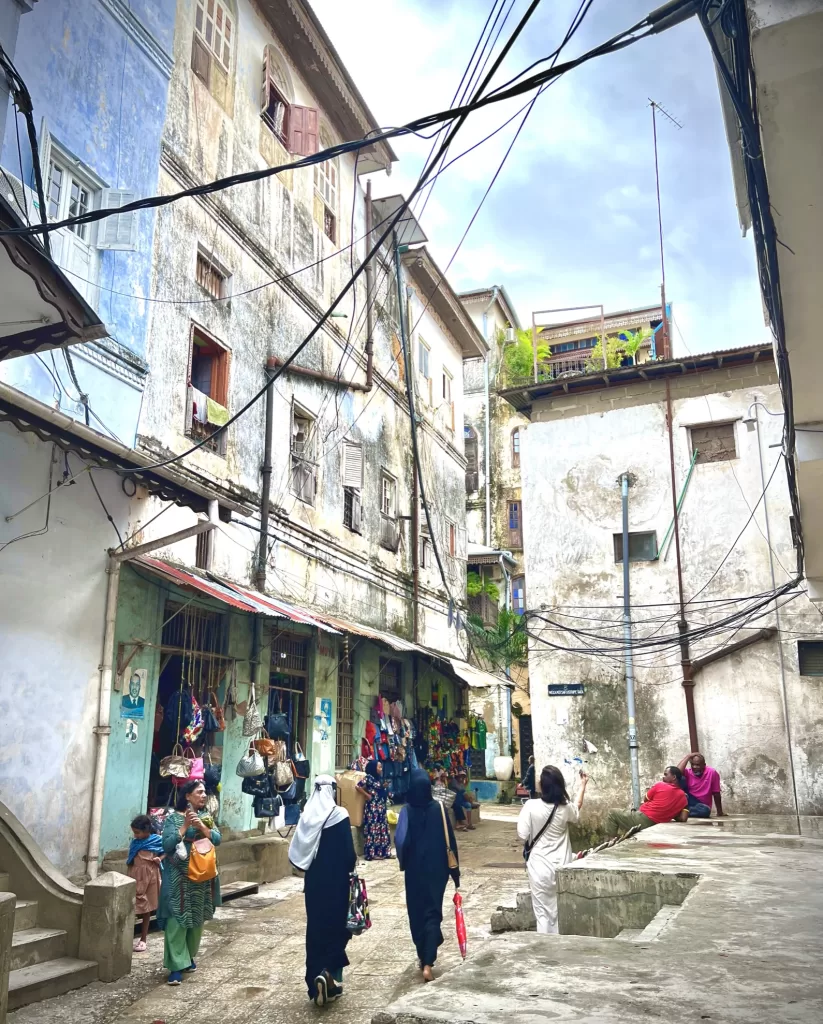
In 1908 the first public electricity supply on Tanzania’s mainland was established by German colonialists. The electricity powered the German-controlled railways and workshops—almost no Tanzanians were provided access.
When vast oil reserves were discovered in and around Saudi Arabia during the 1930s and 40s, petroleum quickly flowed from Gulf countries to their trading partners. Zanzibar and the rest of Tanzania finally had access to a powerful new energy source.
Gulf countries continue to be some of Tanzania’s most prominent energy suppliers. Annually Tanzania imports $1.03B from the United Arab Emirates, $652M from Saudi Arabia, and $116M from Oman.
Tanzania is the nexus for petroleum and East Africa
Today, the coastal city of Dar es Salaam is Tanzania’s business center, the connecting point to Zanzibar, and the hub for East Africa’s oil and gas imports and exports.
Dalbit Petroleum, a Kenyan and Dubai-based firm, supplies much of Tanzania and East Africa with petroleum. Their supply chain depends on Dar es Salaam’s port. The city is also home to The East Africa Crude Oil Pipeline and Mtwara–Dar es Salaam Natural Gas Pipeline.
The East Africa pipeline transports crude oil from landlocked Uganda to the sea for export. The Mtwara pipeline supplies Dar es Salaam’s power stations and electricity to Zanzibar.
Unsurprisingly, Tanzania’s electricity supply is dependent on petroleum. 5 billion liters of petroleum products are imported annually for domestic use.

How petroleum dependence serves Tanzania
Dependence on petroleum and its price volatility impacts the accessibility and affordability of Tanzanian electricity, which is partially responsible for the frequent power outages.
Even so, at first glance, it appears that petroleum has at least helped keep electricity costs low for Tanzanians.
Families in Tanzania pay $0.10 per kilowatt hour (kWh) to electrify their homes. That’s similar to the rate my parents pay in the US state of Ohio. And much less than neighboring countries with rates of $0.15 to $0.22.

But peel back a layer, and several destabilizing costs are revealed.
Petroleum expenditures
Tanzania spends a massive amount of money importing petroleum—over $2B annually—nearly 3% of its gross domestic product (GDP).
These energy costs significantly burden the country’s socioeconomic and infrastructure development. In Zanzibar, electric grid failures caused months-long blackouts in 2008, 2009, and 2010—devastating the local economy, which relies on tourism and requires a continuous power supply.
Importing so much means global petroleum prices dictate Tanzanians’ energy costs, electricity supply, and quality of life. Since the most recent Russian invasion of Ukraine in early 2022, oil and gas prices have gone through the roof. It’s causing fuel price shocks and inflation in many countries, including Tanzania, hindering the government’s investments to expand electricity access.
Opening the door to corruption
Transacting so much money to buy energy recently led to eye-popping corruption.
In 2014, Tanzania Electric Supply Company (TANESCO), Tanzania’s government-run utility company, opened an account secretly transferring money to offshore businesspeople, Tanzania’s Housing Minister, and the Attorney General’s personal accounts. Before being caught, they stole over $183M from Tanzanians. After they were caught, so much trust was broken that international donors withdrew another $500M in budgetary support for Tanzanians.
Climate Crisis
The growing climate crisis is wreaking havoc in Tanzania. It’s estimated to be causing 70% of natural disasters in the country, impacting critical sectors like infrastructure, agriculture, and manufacturing. The cost just to address recurrent droughts and flood risk exceeds 1% of annual GDP.
Sea level rise is also an existential risk to the country. Tanzania has a vast coastline, and the island kingdom of Zanzibar is mostly flat.
Yet continuing to burn fossil fuels has caused the country’s CO2 emissions to rapidly increase in the 21st century, from 2.61 Megatons in 2000 to 11.92 in 2020.
Electricity access
After independence in 1961, the government desired broader electricity access for households, industry, and irrigation. Expanding electricity was essential for improving rural livelihoods while slowing the rapid rural-urban migration and deforestation.
In 1964, Tanzania formed its first public power utility, TANESCO, which first invested in large-scale hydroelectric plants to expand electricity access while reducing the cost of importing fossil fuels.
Yet fossil fuels still reign supreme, and unfortunately, their use hasn’t eliminated energy poverty for Tanzanians. Over 40 million Tanzanians need electricity at home.
Zanzibar gets electricity from mainland Tanzania through a 100-megawatt (MW) submarine cable. The island’s electricity demand long surpassed the cables’ capacity, and only half of Zanzibarians have electricity access today.
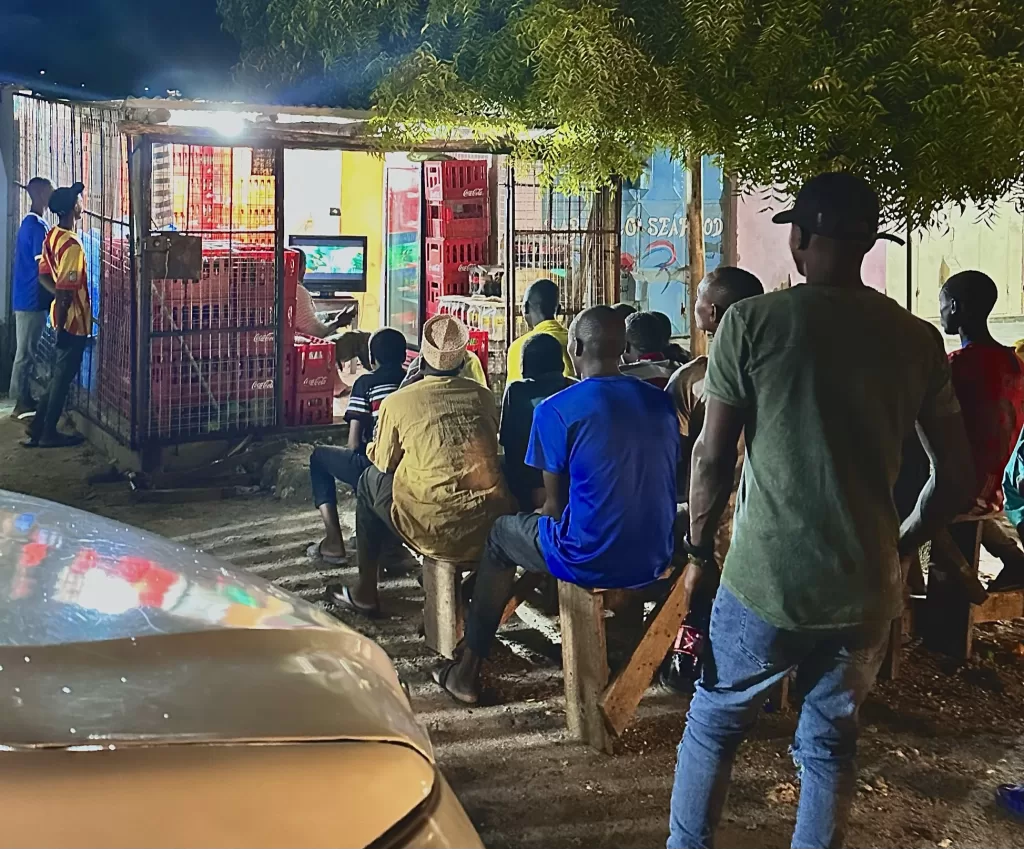
On the mainland, 37% of homes and facilities are electrified, and there’s a significant disparity between urban and rural communities. 73% of people in urban areas have electricity, but only 18% in rural areas.
The lack of reliable, or any, electricity means doctors perform operations with the light of a cell phone, students strain their eyes to study by the light of kerosene lamps, and entrepreneurs have to spend valuable resources and brainpower securing power.
When businesses don’t have electricity, they lose money. When people don’t have electricity, they lose much more.
The costs of fossil fuel dependence are too high.
Tanzania needs energy independence to improve the population’s health, security, finances, and access to opportunity. Energy independence is only achievable by generating electricity domestically from clean energy sources.
Evolving Tanzanian power
Dar es Salaam’s massive petroleum storage facility perfectly encapsulates why burning petroleum to generate electricity no longer makes sense for Tanzanians.
Solar panels are attached to all of the facility’s lights and fence posts.
Why?
Is it just that the CEO is a Biggie Smalls fan who lives by the maxim, “Don’t get high on your own supply.” It’s possible, even so, that decision is grounded in the fact that buying a solar panel and generating free electricity costs much less than continually burning fossil fuels.
Logically, but surprisingly to many across the globe, fossil fuel companies power many of their operations, facilities, vehicles, and gas stations with solar energy.
Recently, we stopped at Total gas station for an oil change in Uganda. I struck up a conversation with a gas station attendant as we watched a man with an unconventional method for transporting fish. He told me that solar panels on the roof power the entire gas station.

Global petroleum companies have determined that powering their East African operations with clean energy makes the most sense. If it makes sense for companies in East Africa, then it also makes sense for people in East Africa.
Achieving energy independence in Tanzania
In recent years, Tanzania’s politicians and public have recognized the precariousness and high costs of such dependence on foreign petroleum. They’re taking a new approach to meet the ambitious goal of all Tanzanians having electricity by 2030.
TANESCO to meet new demand through low-cost solutions. So they’re focusing on bolstering domestic clean energy production.
Pivoting to Clean Energy
The Tanzanian government and TANESCO have started supporting private sector construction and management of clean energy technologies at scale.
For example, Tanzania’s first wind farm opened in Iringa in 2020.
There’s still a long way to go, but these investments are paying off. Electricity access has more than doubled since 2008.
Plenty of large-scale clean energy projects are in the works to electrify new regions. Ongoing energy power auctions expect to add 350 MW of wind and solar power. And next year, a 2,115 MW hydropower plant will open.
But distributed solar panels have also brought electrification to new regions. Close to six million people were supplied with improved solar energy access from 2016 to 2018, particularly in off-grid communities.
And to electrify the rest of the country, more Tanzanians will need to leapfrog the power grid and become electrified by community mini-grids, personal solar systems, and renewable microgrids for individual buildings.
Who already uses solar microgrids in Tanzania
There are 1 million solar homes in Tanzania, but it’s still far from common.
Solar microgrids are plentiful in neighboring Uganda. I assumed it would be similar here.
In Dar es Salaam, I spotted a few stores with small solar panels on their roofs. But it’s much more common to see Ugandan stores powered by the sun’s rays.
I suspected there’d be more in Zanzibar because islands typically have high fuel costs, and Zanzibarians have had challenges getting reliable power from the grid. But there were even fewer solar-powered buildings than on the mainland.
Mody, a retired boat captain and driver I befriended, said there were few solar-powered homes or businesses on the island, although he knew of a couple hotels that were. The Toa Hotel and Spa in Pogwe was the only one we passed on our drives around the island.
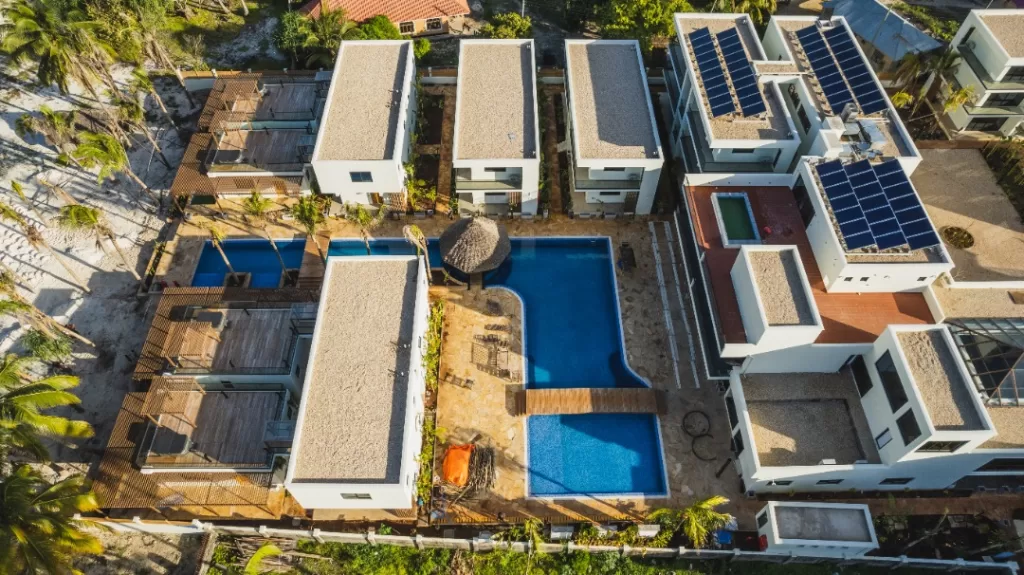
Aside from Toa, we found a kite surfing school in Paje with a single solar panel, a row of solar-powered streetlights on the main avenue in Kisauni, and a few hotels and food courts with small solar panels powering outdoor lights and security cameras at hotels and food courts. That was it.
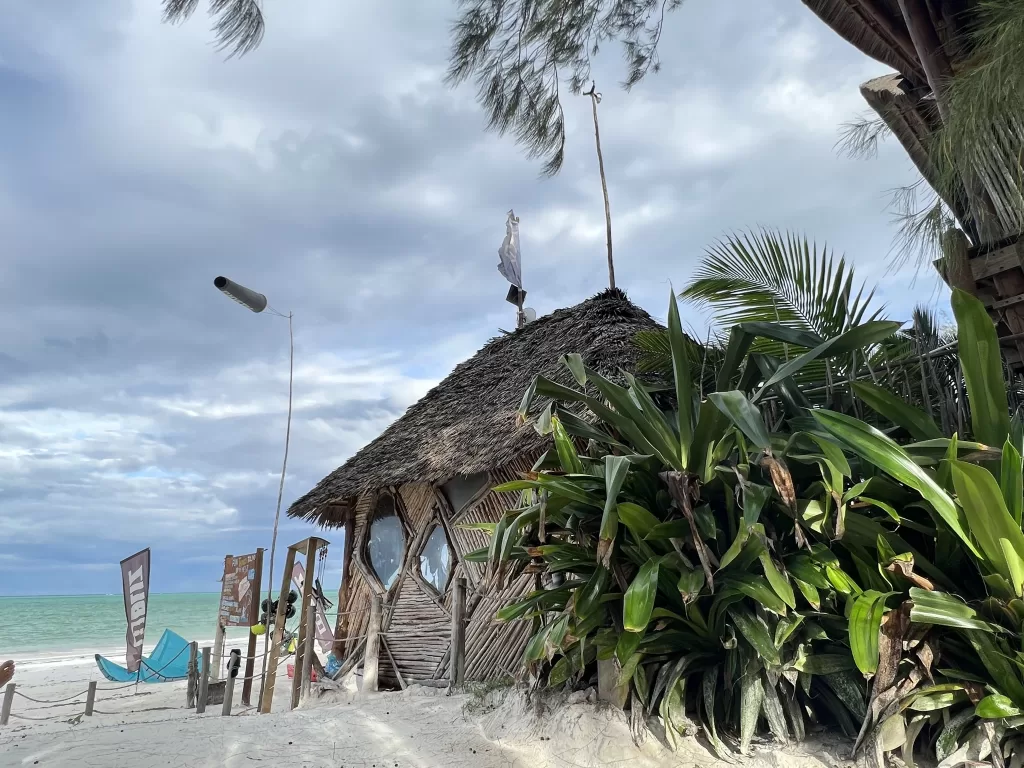
On the mainland, Msimba village, Kigoma Region, Western Tanzania, has a nighttime market powered by a solar microgrid set up by the Millennium Challenge Corporation’s solar energy programs.
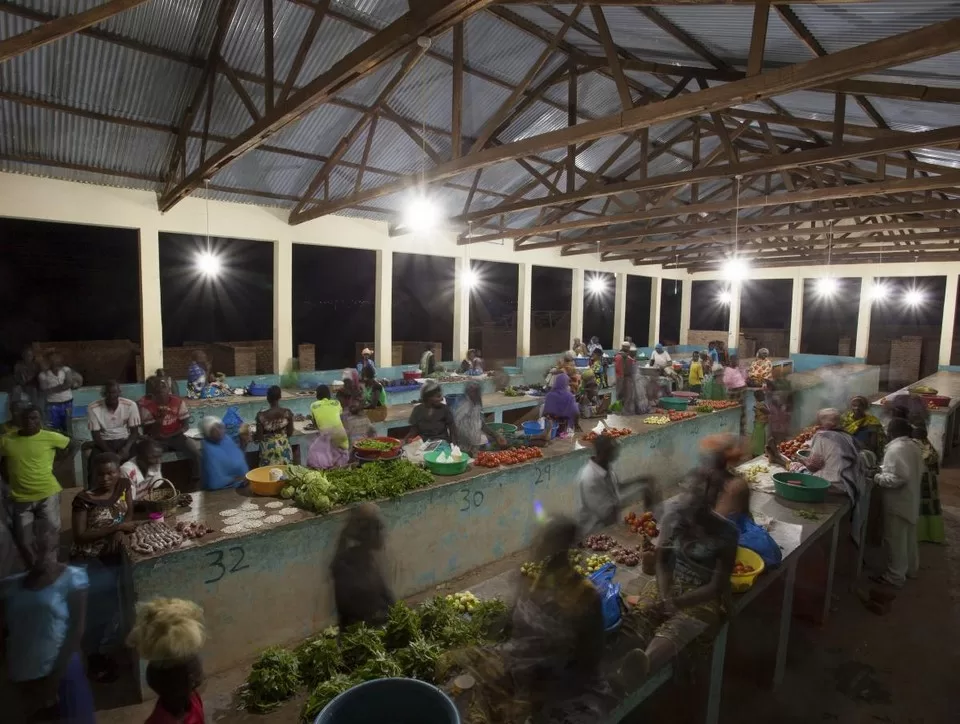
The Millennium Challenge Corporation has also electrified dozens of markets, schools, hospitals, and dispensaries in off-grid communities across the region.
But as a general matter, powering Tanzanians’ and Zanzibarians’ lives with solar and renewable microgrids is in the not-to-distance future instead of a widespread reality today.
So solar, why aren’t more of Tanzania’s solar powered
Returning to where we started, why haven’t the hotels where I stayed secured reliable power with solar microgrids, and why aren’t more Tanzanians taking advantage of solar energy?
Ultimately, it seems that the main reason is people are accustomed to their energy coming from petroleum for biofuels. Widespread adoption of new technologies is typically slow in any culture or country until it reaches the inflection point where society sees its use as common sense, and most people quickly transition to the superior “new” option.
The superiority of solar power over burning fossil fuels is clear. It’s cheaper and cleaner while providing independence and reliability. That’s true almost everywhere, and Tanzania is far from alone in gradually transitioning to solar. In the United States, 4% of homes are solar-powered. Yet, the vast majority of households would save money by generating their own power with a solar system instead of buying it all from utility companies…but most people in the US still think solar is too expensive.
An interesting phenomenon impacting clean energy adoption in Lesotho may also be at play in Tanzania. Many adults who have lived their entire lives without electricity in unelectrified communities don’t see how electricity can improve their lives.
It’s likely the reality is that not enough Tanzanians have family members or neighbors who use solar power, so they assume that it’s not yet a viable or valuable option for them. Only time and consistent effort from solar providers and the Tanzania government will change that.
There are also a few technical blockers making it challenging for Tanzanians to access electricity from the sun.
Poverty restricts people’s ability to afford the upfront cost of buying the new technology that will enable them to evolve their energy use. 50% of Tanzania’s population lives in poverty, of which 35% cannot cover all of their basic needs, including energy services. The poor spend about 35% of their household income on energy, compared to 14% for other socioeconomic groups, which results in limited purchasing power.
To address the upfront cost issue, the solar industry has offered Tanzanians the ability to pay a smaller upfront payment and pay-as-you-go financing to cover the rest of the price. But fewer and fewer Tanzanians have opted to use it each year; it’s had a -19% compound annual growth rate. Suggesting that the upfront payments are still a barrier. Providers may need to offer pay-as-you-go with no upfront charge for broader adoption. To do that, there also needs to be more support to help these companies determine the creditworthiness of the unbanked.
A highly regulated and competitive market, as well as supply chain constraints, have also challenged suppliers to make their products and services more widely available.
However, many people can overcome these challenges by speaking with an experienced solar provider.
How to become energy independent in Tanzania
Here are a few companies that are experienced in helping Tanzanians access solar.
Aptech Africa builds solar microgrids for homes, businesses, industries, and communities. Their team has a depth of experience building these systems across East Africa in a diverse range of environments and communities.
Sun King supports families nationwide to leapfrog into electrified homes with a wide range of affordable solar products and home electronics, which are purchasable with pay-as-you-go financing.
Simusolar specializes in clean energy-powered equipment for East African communities. They’re especially focused on supporting farmers and people living off-grid.
If you’re in Tanzania and looking for clean energy suppliers in your area, it’s worth speaking with the Rural Electrification Agency (REA). If you want to start a business serving Tanzanians with clean energy solutions, the REA’s Rural Electrification Fund may be able to support you.
Do you have thoughts or stories about Tanzania’s transition to clean electricity and energy independence, then shoot me a message: electricislandsblog@gmail.com
If you’d like to be notified when new Electric Islands content drops and are in touch with our community, then join the mailing list.
Thanks for stopping by. I’m glad we’re reimagining the world together.
Clean energy for all.
Much love,
Alexander Boom
TRAVEL TIPS: Expert guide in Zanzibar
Planning a trip to Zanzibar and looking for a local guide to show you around by land or sea? Contact Mody Black.
Mody Black

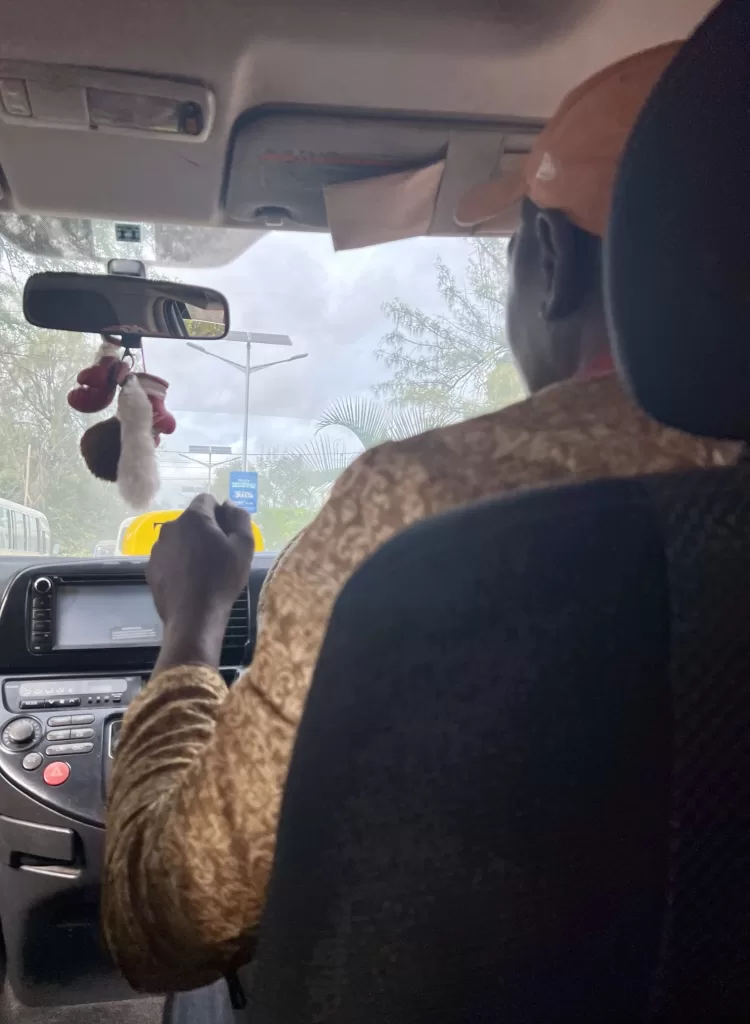
Mody is a native Zanzibarian with decades of experience captaining the seas around Zanzibar, the coasts of East Africa, and throughout the Gulf. He also knows the roads of Zanzibar like the back of his hand.
During our recent trip to Tanzania, my wife and I rode with Mody all over the island. He’s a great conversationalist and it was wonderful to get his learn about the island through his eyes, as well as jam out to Bob Marley.
If you’re in Zanzibar and need a fun, reliable, and trustworthy guide to take to explore different beaches, towns, or nearby islands, contact Mody.
Phone #: +255 777 825 441 (available via Whatsapp)

